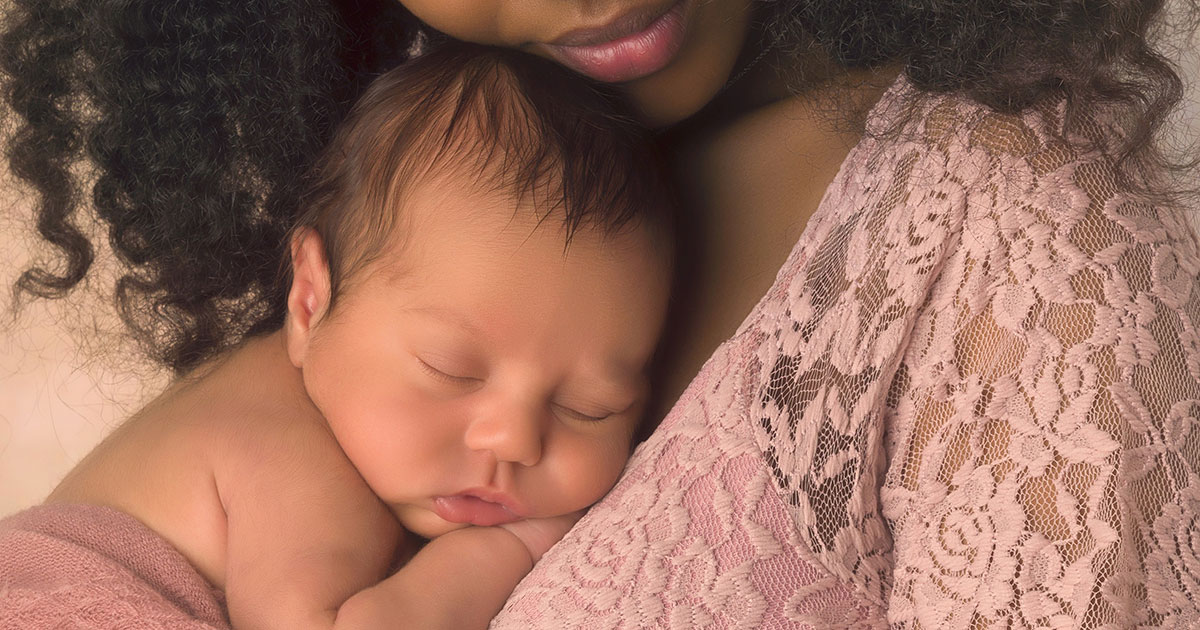
What parents can do to ensure safe sleep for their baby
Before a baby is even born, parents should learn best practices for safe sleep, to help reduce the risk of a sleep-related death due to accidental suffocation.
Sleep-related causes of infant death are those linked to how or where a baby sleeps and are result of suffocation, entrapment or strangulation. Entrapment is when the baby gets trapped between two objects, such as a mattress and a wall, and can’t breathe. Strangulation is when something presses on or wraps around the baby’s neck, blocking the baby’s airway. These deaths are not the result of sudden-infant death syndrome (SIDS).
“Safe sleep habits reduce the risk of SIDS, which is the leading cause of death among babies between 1 month and a year of age,” said Joey Evans, a registered nurse who oversees safe sleep education for the Birthing Center at OSF HealthCare St. Joseph Medical Center in Bloomington, Illinois.
According to the Centers for Disease Control and Prevention, in 2017, there were about 1,400 deaths due to SIDS, about 1,300 deaths due to unknown causes, and about 900 deaths due to accidental suffocation and strangulation in bed.
“A lot of parents believe it won’t happen to them,” Joey said. “But it can, if they don’t practice safe sleep habits.”
OSF St. Joseph has been designated a Cribs for Kids® National Gold Certified Safe Sleep hospital for its commitment to promoting and educating best safe sleep practices for infants. Cribs for Kids is dedicated to preventing infant sleep-related deaths due to accidental suffocation. As a nationally certified Safe Sleep Hospital, OSF St. Joseph is recognized for following the safe sleep guidelines recommended by the American Academy of Pediatrics (AAP) and providing training programs for health care team members and family caregivers.
“This certification shows our parents that we care about them and their babies by providing them with the safest and greatest care possible,” Joey said.
Steps parents can take
Learn more about infant safe sleep
To create a safe sleep environment, Joey recommends parents:
- Always place a baby on their back to sleep, for naps and at night, to reduce the risk of sudden unexpected infant death (SUID).
- Use a firm sleep surface, covered by a fitted sheet; a crib, bassinet, portable crib or play yard that conforms to the safety standards of the Consumer Product Safety Commission is recommended.
- The baby should not sleep in an adult bed, on a couch or on a chair alone, with a parent, or with anyone else.
- Keep the baby’s sleep area in the same room where the parent sleeps (for the infant’s first year). Room sharing not bed sharing. Always place the baby in a safety-approved crib, bassinet or portable crib for sleep.
- Sitting devices like bouncy seats, swings, infant carriers or strollers should not be used for routine sleep.
- Keep soft objects such as pillows and blankets, toys and bumpers out of the baby’s sleep area.
- Wedges and positioners should not be used.
- Do not smoke during pregnancy or allow smoking around the baby.
- Do not let the baby get too hot during sleep.
- Breastfeed baby.
- Give the baby a dry pacifier that is not attached to a string for naps and at night.
Addressing misconceptions
“One misconception some parents have is that their baby won’t sleep when they are on their back or in their own sleeping environment,” Joey said. “Some parents believe they have to sleep with the baby otherwise nobody gets any sleep.
“We address this is by reminding parents that a baby sleeping on their back and in their own sleep environment is what has been proven by research and recommend by the AAP to be what is the safest and best for baby,” she said. “We recommend that instead of co-bedding they could co-room. Meaning that the baby’s sleep environment would be in the same room as the parents’ sleep environment but that they’re not sleeping together. Parents also could share the burden of no sleep between each other, in other words take shifts so each parent gets sleep.”